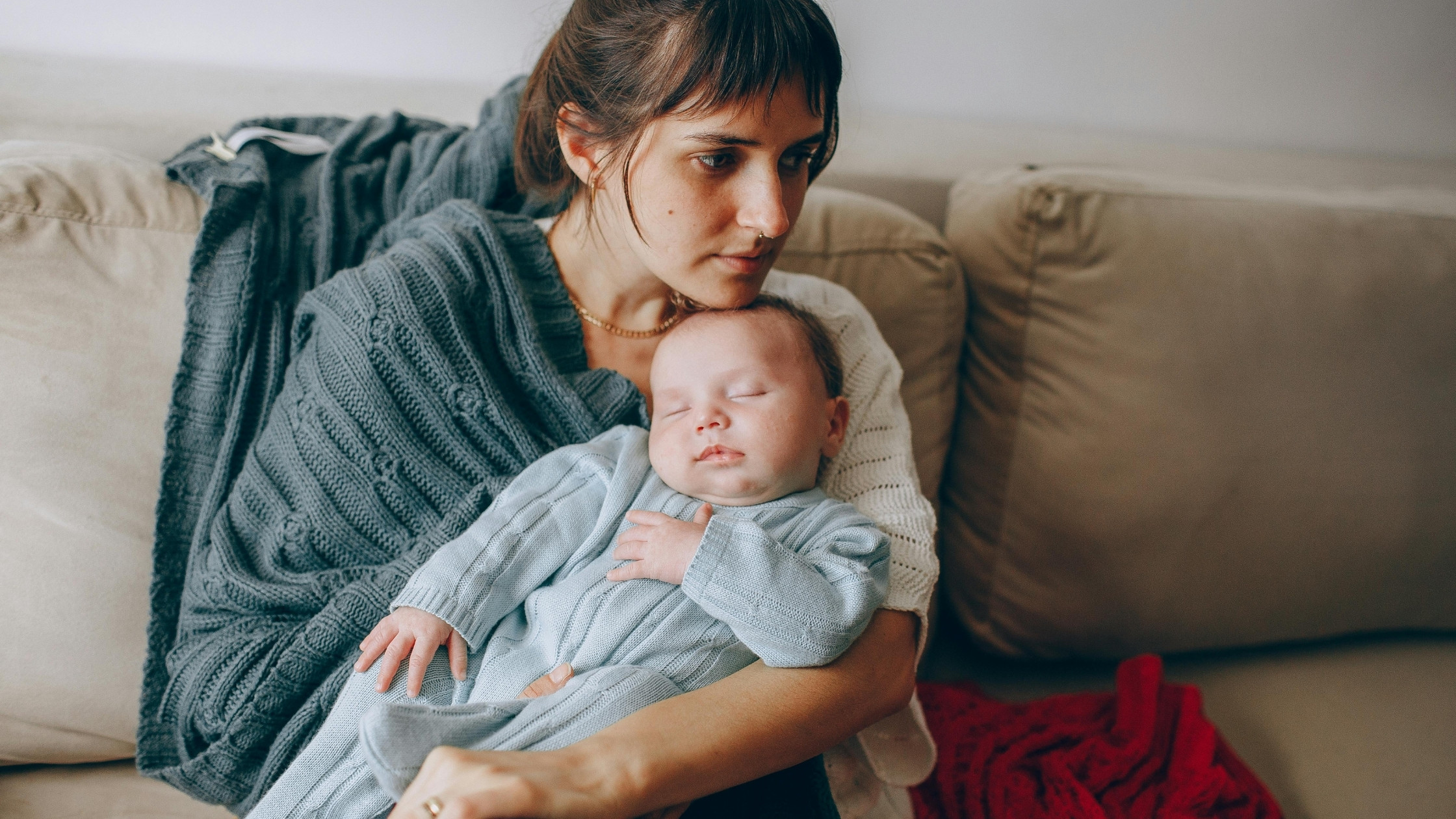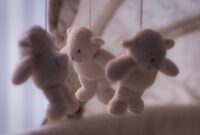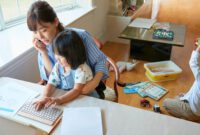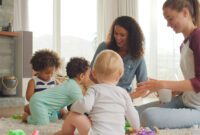Share on Facebook | Follow on Instagram:
As a parent to a newborn, it’s hard not to be thinking of your child’s safety at all times. It’s like those thoughts are even more at the forefront of our tired brains when our little one is sleeping. Why? Because we’ve all heard the horror stories about things like SIDS and other things that can happen to babies as they sleep. Innocuous things like blankets, stuffed toys, and even bed sheets which are virtually harmless to us grownups and even older children can be significant threats to an infant. In today’s blog, we’re going to cover some best practices that you can follow in order to help ensure that your baby’s night is safe and uneventful so that you can get at least some peace of mind.
Start With The ABC’s of Sleep
Here’s a simple way to remember how to help keep your baby safe while sleeping. Follow your ABC’s.
A= Alone. Make sure that your baby is alone in their sleep space. Alone means no stuffed animals, no blankets, pillows, and no toys of any kind. Those can become a sleep safety hazard.
B= Back. Babies should be put down for sleep on their backs. Do not put your baby down on their stomach, side, or at an angle. Flat on their back is the safest according to the latest medical data.
C= Crib. They should be in a specialized dedicated newborn sleeping area, whether that be a bassinet, crib, or other pediatrician approved sleeping setup. They should not be put to sleep on the floor (lack of proper air ventilation), or in a regular bed, or in a chair or similar. They need to be on a surface that is flat and firm and has a specialized sheet that is tightly held and avoids bunching. Ask your doctor about their recommendations for sleeping spaces.
Other Sleep Safety Tips
Remember, these tips aren’t meant to necessarily scare you, but are a guide to ensuring that your baby has the best possible chance to sleep safely, and soundly both during the day and at night. Here are a few more quick tips you can follow:
- Use a Firm Mattress and Fitted Sheet
-
-
- As mentioned above, a firm mattress purpose built for babies and a tight fitted sheet are the safest options. Anything that can bunch up, wrinkle, or become tangled is not safe. We really like fully breathable mattresses like this one.
-
- Maintain a Comfortable Temperature
-
-
- Don’t over dress your baby for sleep. If you want to keep them warm, the best way is to keep the ambient temperature of the room warm and dress them lightly in form fitting sleeping clothes that are made for safe sleep. A baby that is too hot or too cold won’t sleep as long and being too hot has also been linked to greater risk of SIDS. 68-72 degrees Fahrenheit is appropriate for most homes and babies. If your baby runs warm, keep the temperature on the cooler side of the range.
- If the temperature in your baby’s nursery seems unpredictable or you don’t feel at ease about the temperature in their sleep space, please get a thermometer that connects to an app. These will alert you to fluctuations in temperature and you can set your desired temperature range.
-
- Offer a Pacifier at Bedtime
-
- But not one with a connector clip or string. Pacifiers have shown to reduce SIDS risk and can help them develop self soothing habits as well.
Before You Go
We hope that this blog about baby sleep safety tips was helpful to you. If your little one is still fussy after feeds, struggling to settle, or having trouble sleeping, we’re here to support you.
From sleep consulting to in-home sleep training and overnight newborn care or in-home newborn care services, we offer personalized guidance to help your little one (and you!) get the rest you need.
Have questions? Let’s Chat — we’d love to help your family rest easier.
Katie B.
Expertise You Need:
- Certified Master Pediatric Sleep Consultant
- Certified Advanced Newborn Care Specialist (2016-2022)
- Board Certified Holistic Healthcare Practitioner
- 16 years professional childcare experience
- Certified Postpartum Doula (2015-2022)
- Travel & ROTA Nanny
Katie has over 16 years experience working with children of all ages. As a Pediatric Sleep Consultant and Newborn Care Specialist, she has professionally supported families and babies worldwide over the last 10 years. Her mission is to help the entire family unit get better sleep, utilizing a holistic approach that supports the baby or child’s natural biologic drive to sleep. She has personally served hundreds of families, holds 20,000+ hours exclusively caring for infants & babies and has 69+ 5-⭐️ Google reviews.
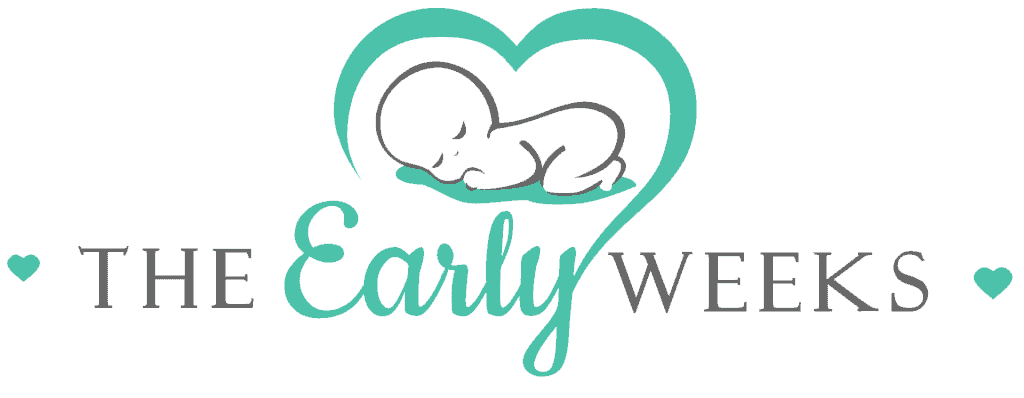
The content contained in this blog is for informational and educational purposes only. It is not intended as medical advice or to replace the advice of any medical professional. It is based on our opinions and experience working with newborns and their families. Other’s opinions may vary. It does not represent the views of any affiliated organizations. The reader understands that the term “Babynurse” is often a word used to describe a newborn caregiver. However, unless otherwise disclosed, we are not licensed nurses in any state. By reading and/or utilizing any information or suggestions contained in this blog, the reader acknowledges that we are not medical professionals and agrees to and waives any claim, known or unknown, past, present or future. This blog may contain affiliate links.
© 2024 Bishop Enterprises, LLC All Rights Reserved
Share on Facebook | Follow on Instagram:
Disclaimer: This content was automatically imported from a third-party source via RSS feed. The original source is: https://www.theearlyweeks.com/safe-sleep-101-best-practices-for-newborns-and-infants/?utm_source=rss&utm_medium=rss&utm_campaign=safe-sleep-101-best-practices-for-newborns-and-infants. xn--babytilbehr-pgb.com does not claim ownership of this content. All rights remain with the original publisher.
